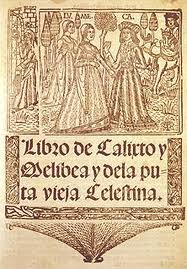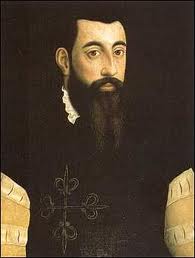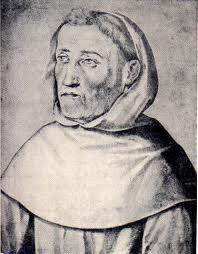Spanish Literature of the Renaissance
The Renaissance took its time to reach the Iberian peninsula. Nevertheless, once it did, it took the country by storm. A significant year in the development of modern Spain was 1492: the year of the publication of the first official Spanish grammar text by Antonio de Nebrija is also the year when the Catholic monarchs managed to conquer the fiefdom of Granada from the Muslim king, expel all Jews from their territories and entrust Christopher Columbus to find an alternative route to get to the Indies.

The leap was dramatic. Before the end of the century, Spain was already penetrating the South American mainland, conquering new territories and establishing what later would become its Empire. Meanwhile, back in the Old World Fernando de Rojas published what is symbolically considered to be the final work of the Pre-Renaissance, or Spain's prolonged medievalism, La celestina between 1499 and 1502.
With the dawn of a new century came as well a new age in the history of Spain, and this refers not only to the Age of Discovery, but also to the Habsburg era, which ruled the country from 1506, with the accession of Charles I as King, until the War of the Spanish Succession, two hundred years later.
It was within the environment of this new court with considerable northern influence, that the primary representatives of the Spanish Renaissance emerged, such as Garcilaso de la Vega, or Juan Boscán, who would carry Spanish literature onto the next stage. Boscán was, as a matter of fact, Catalan, born in Barcelona, but at this stage the dominant language was, unequivocally, Castilian.
Hence, Boscán's poems, mostly lyrical explorations into the theme of love, are primarily written, not in the Occitanian language, but rather in the vernacular Castilian, which, by now was consolidating itself as the universal language of Spain - as Spanish. An aristocrat with a military career, Boscan served during the time of the Catholic monarchs and lived through the transition to the Habsburg reign.

Highly influenced by his trips to Italy, where he was appointed as ambassador, Boscan introduced a number of technical innovations to the language of the Spanish Renaissance, most notably the use of the 11-syllable (hendecasyllable) structure. An emphatic admirer of Italian verse, he explored in detail the sort of Petrarchan themes that the Marquis of Santillana had introduced in the country before him.
Boscán's compilation of his complete works, published posthumously in 1543, is perhaps the most important literary document of the century, not only for his contributions to the genre, but because the four-volume collection also includes 'some' of the poetry of Boscán's great friend and colleague, Garcilaso de la Vega.
Also an aristocrat and a soldier, Garcilaso de la Vega stands out in the Spanish Renaissance as its archetypal exponent. A courtesan to the core, he was a polyglot and an accomplished musician, who was admitted to Charles V's Imperial Guard in 1520. His military career took him all over Europe at a time when travelling was limited to a precious few, and his experiences abroad greatly influenced his poetic production.
Like most poets of the time, he was an admirer of Petrarcha's love verse, which he adapted into Spanish. His attitude towards love, however, was entirely secular, lacking every semblance of religious piety. In keeping with the fashion of the time, Garcilaso de la Vega recycled a number of classical myths and recreated an Arcadian environment in his poetry. And yet, his deeply personal lyric is characterised by the simplicity of its language, which moves away from the bombastic tone of the court.
Tenebrism
Side by side to this secular tendency, the Spanish Renaissance is marked by the remarkable output of mystical writers, whose teachings, filled with religious symbolism, provide the stepping stone for the Tenebrism that will dominate Spanish art in the early stages of the Baroque. The first, and arguably most influential, mystic of the Spanish Renaissance was Saint Teresa of Jesus, whose The Interior Castle greatly exalts the merits of meditation and the contemplative life.
While Saint Teresa's teachings are written in prose, Saint John of the Cross' inventive verse ranks among the best in Spanish language. Particular mentions must go to his Spiritual Canticle and Dark Night of the Soul, both of which deal with the soul's struggles to be reunited with God.

Finally, an unavoidable name in Spanish language is Fray Luis de León, a central figure in ascetic literature. Adept at writing both in prose and verse, his most famous treatise is titled The Names of Christ. Meanwhile, his poetry contrasts against that of his predecessors in that his devotion to the contemplative life comes together with his quest for knowledge, in a sense that comes close to Plato's.
By the time Fray Luis de León had published The Names of Christ and John of the Cross had done the same with Dark Night of the Soul, the Spanish Empire had reached its climax. Victorious at Lepanto and not yet squared against the English, Spain enjoyed the very best of times round about 1580, and so much would be reflected in its literature soon thereafter.
